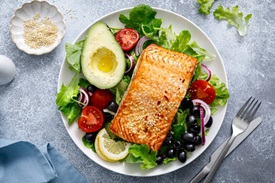Mediterranean Diet: Choosing Heart-Healthy Foods and Snacks
May 21, 2025
This article was reviewed by our Baystate Health team to ensure medical accuracy.
Dina Dugan, RD Brandy Sarrette, RDN, LDN
Health & Wellness Tips
Related Articles
Back to Top













